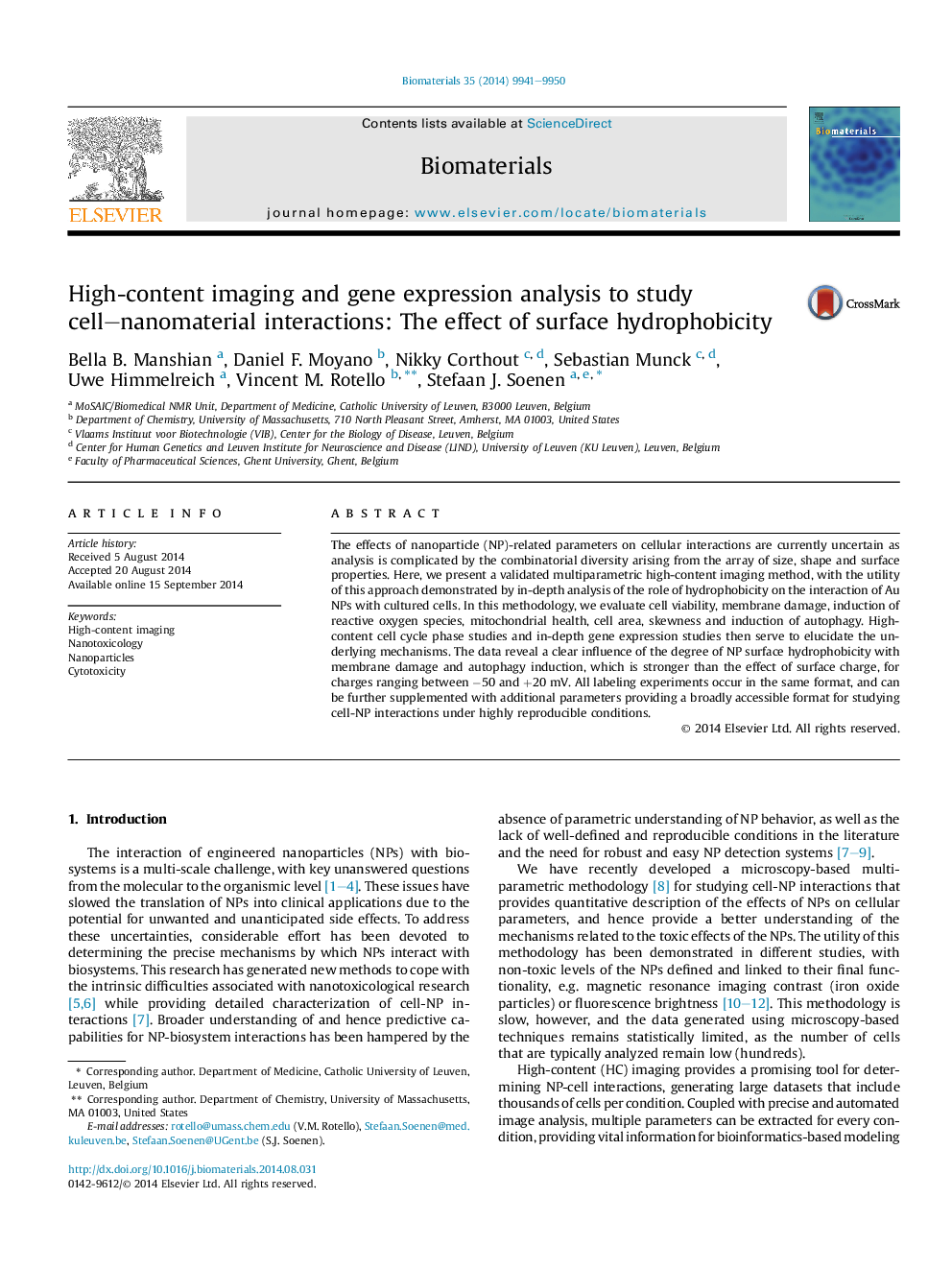| Article ID | Journal | Published Year | Pages | File Type |
|---|---|---|---|---|
| 5957 | Biomaterials | 2014 | 10 Pages |
The effects of nanoparticle (NP)-related parameters on cellular interactions are currently uncertain as analysis is complicated by the combinatorial diversity arising from the array of size, shape and surface properties. Here, we present a validated multiparametric high-content imaging method, with the utility of this approach demonstrated by in-depth analysis of the role of hydrophobicity on the interaction of Au NPs with cultured cells. In this methodology, we evaluate cell viability, membrane damage, induction of reactive oxygen species, mitochondrial health, cell area, skewness and induction of autophagy. High-content cell cycle phase studies and in-depth gene expression studies then serve to elucidate the underlying mechanisms. The data reveal a clear influence of the degree of NP surface hydrophobicity with membrane damage and autophagy induction, which is stronger than the effect of surface charge, for charges ranging between −50 and +20 mV. All labeling experiments occur in the same format, and can be further supplemented with additional parameters providing a broadly accessible format for studying cell-NP interactions under highly reproducible conditions.
